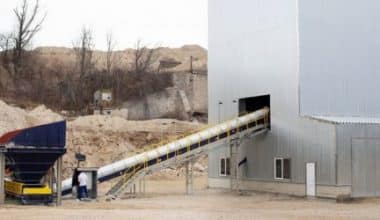The details of rental agreements for real estate, as well as for real and personal property, are outlined in leases, which are legally enforceable contracts. These contracts are binding by both parties and contain obligations for each party to carry out and uphold the agreement. This blog post contains details on how both a real estate lease and a car lease agreement works, including the difference between a lease and rent.
What Is A Lease?
The conditions under which one party agrees to rent an asset—in this case, property—owned by another party are outlined in a lease. It ensures that the tenant, also known as the lessee, will have access to the property and, in return, will make monthly payments to the lessor (the landlord or owner of the property). If either party violates the contract’s conditions, there will be repercussions for both the lessee and the lessor. A lease is a type of incorporeal right.
What Is A Lease Agreement?
A lease agreement is only a contract outlining the monthly rent payment and duration between a landlord and a renter. Like many contracts, lease agreements can terrify some people because so much of the terminology is difficult to understand. On the contrary, if you have a basic understanding of what is included in a lease agreement, it will be easier for you to prevent disputes or costs that are not necessary either while or after your lease is up.
Elements Of A Lease Agreement
The terms of the lease specify the obligations and responsibilities of both the lessor (landlord) and the tenant (lessee). It details the length of the lease, the amount of the monthly rent, and who will be in charge of maintaining the property, as per the agreement between the landlord and the tenant. Tenants should be aware that a lease agreement might be changed before being signed. When you sign the lease, speak with the landlord if there is anything you do not understand or agree to, or if there is a clause that needs to be changed.
A Legal, Binding Document
As soon as your lease is signed, it controls what the landlord and the renter are allowed to do during the lease’s length. If any legal action is taken against either party, the court will refer to the lease agreement as a valid, legally-binding contract between the landlord and tenant. It is crucial for everyone involved to be aware of their obligations under the terms of the lease because if there are multiple tenants responsible for it, the landlord may enforce it against all of them if necessary.
Oral Lease Agreements
HowIt is crucial to remember that not all states permit verbal residential lease agreements, and verbal commercial agreements are forbidden in all states. While the majority of lease agreements are written, there are some verbal lease agreements that can be enforced as oral contracts. Tenants’ rights laws are present in every jurisdiction and provide protection for those with verbal residential lease agreements. Verbal agreements are not permitted since they are nearly impossible to sustain in court due to the complexity of commercial leases.
What Are The 4 Types Of Leases
Beyond residential leases, tenants who rent commercial buildings can choose from a number of lease forms, all of which are designed to place more responsibility on the tenant and increase the landlord’s upfront profit.
In some commercial leases, the tenant is required to pay rent along with the landlord’s operating expenses, whereas, in other leases, the tenant is required to pay rent along with real estate taxes and insurance. The four most typical styles of commercial property leases are as follows:
- Single-Net Leases: In these leases, the tenant is in charge of paying the real estate taxes.
- Double-Net Leases: Under these leases, the tenant is liable for both insurance and property taxes.
- Triple-Net Leases: Under these leases, the tenant is responsible for paying all maintenance, insurance, and property taxes.
- Gross Leases: The landlord bears the cost of additional expenses while the tenant only pays the rent.
Rent vs. Lease
Rent is the amount paid in accordance with the conditions of a lease, which is a contract in the real estate industry for a set length of time (often 6 or 12 months) after which the contract expires. Rental agreements are another name for real estate leases.
Rent vs Lease: What Is The Relationship?
A lease in real estate is a contract that specifies how a property may be used. This covers what is being rented, how long it will be rented for, and any additional conditions that both parties agree upon (e.g., whether pets are allowed on the property).
Rent is the regular payment paid to the property owner, also known as the “landlord,” for the use of a building, residential space (such as a house or apartment), commercial space (such as an office, store, or warehouse), or land. In other commercial contexts, rent is the payment or series of payments given to the owner of a property for the use of that property, such as equipment, vehicles, industrial machinery, and so on.
Leasing vs Renting Month-to-Month
If a lease expires, tenants are automatically moved to a “month-to-month” renting arrangement. This continues unless and until both parties sign a new lease with a new expiration date, or until one or both parties decide to terminate the month-to-month arrangement. In this case, tenants are required to generally comply by the terms of the original lease, but conditions are subject to modification on a monthly basis.
Both tenants and property owners have significant advantages and disadvantages to month-to-month leases. Renters benefit from the option to move whenever it is most convenient thanks to month-to-month renting agreements because they don’t have to worry about transferring or breaking a lease. For property owners, this makes rental revenue unclear. Month-to-month agreements are costly for the majority of renters due to the fact that many property owners prefer to charge month-to-month tenants a significantly higher rent rate than those who are on a lease in order to counteract this uncertainty.
In some cases, month-to-month arrangements are more prevalent and less frequently associated with lapsed leases. Short-term leases are typical in cities with a transient population (like Las Vegas) and are not always associated with increased rent costs.
What Is A Car Lease?
A common kind of auto finance called a car lease enables you to “rent” a car from a dealership for a set period of time and number of kilometers. A car is normally leased from a dealer, who gives you access to the vehicle in return for regular lease payments. If there is a buyout provision in your lease, you can choose to keep the automobile rather than return it to the dealer at the end of the term.
To lease a new car, you’ll normally need acceptable credit. According to Experian data, people who leased a new car in the third quarter of 2020 had an average credit score of 733. Scores of 670 and higher are deemed “excellent” by FICO. Keep in mind that even if you don’t own the car you’re leasing, your lease-payment history will show up on your credit reports.
What Distinguishes a Car Lease from a Car Loan?
A car lease and an auto loan are comparable in many ways. For instance, you might have to put money down when you lease a car as the lessee, and you’ll make monthly payments just like you would with a regular auto loan.
Monthly payments for leases are frequently lower than those for auto loans, but there is a drawback to these reduced payments. You’re simply paying for the right to drive the car for a predetermined number of hours and miles, not for the opportunity to accumulate equity in it.
In addition to a car dealership, you can frequently apply for auto loans through banks or other third-party lenders. But, it’s unusual to arrange a car lease through a bank. Instead, you’ll probably deal directly with a dealership or a niche auto loan firm.
Unless your lease allows you to purchase the vehicle, you must return the vehicle to the dealership at the conclusion of the lease term, which is normally two to four years, and walk away from the vehicle and monthly payments forever.
How to Lease A Car
A car lease is a means to “borrow” a car instead of buying a new or used car. There are many things to take into account before approving this long-term commitment because it often comes with a three-year or four-year contract and an extensive agreement.
A wonderful method to drive a newer car with the newest technology and features for less money each month is to lease rather than buy a car. When you’re prepared to lease a car, do the following:
#1. Conduct research
Almost any car released in recent model years is available for lease. The type and brand you are interested in should be narrowed down first while taking into account how the price will work with your budget. Consider your driving style and how the car will fit into your lifestyle when choosing a set of wheels.
#2. Compare vendors
After that, stop by a few dealers and go for a few test drives. That will enable you to focus on more specific aspects of your search. Call ahead to learn more about what’s available and whether test drives are now permitted.
#3. Negotiate the lease’s conditions.
Throughout the leasing procedure, almost everything is negotiable. Also, the bargaining stage is your one opportunity to secure the benefits you seek in writing. Check current prices on websites like Kelley Blue Book and keep in mind that you should bargain for more than just the price to be the finest negotiator.
#4. Compare prices
Use online tools and contrast your options to find the greatest value. Check out a few dealerships before signing off on your automobile. Pay attention to the monthly price, mileage restriction, buyout fee, money element, and capitalized car cost. The fees the lessor is charging, such as the purchase charge, disposition fee, and early termination fee, should also be examined to see if they are reasonable given other similar offerings. Don’t forget to ask about the payment due at signing as well.
#5. Keep the vehicle throughout your lease.
Keep in mind that you have to return the vehicle at the conclusion of the leasing period. You can be required to pay more if it’s in poor shape.
Ask about the requirements for the lease-end condition before leasing a vehicle. These regulations outline the kinds of damage you would be responsible for paying for before returning your vehicle.
Off-Lease Only Cars
Consider buying an off-lease vehicle if you’re looking for a good used car. A vehicle that has just completed its lease and is ready to be purchased is known as an “off-lease” vehicle. Although there are many advantages to owning an off-lease vehicle, you may decide that you’re better off getting one than waiting around for a brand-new automobile.
Advantages of Off-Lease Vehicles
#1. Value for the Money
Compared to previously owned cars, new cars depreciate quickly and significantly more quickly. Within the first year of ownership, the value of the majority of new cars decreases by 20%. Off-lease vehicles are still relatively fresh but considerably less expensive than their unused counterparts because a typical vehicle leasing term lasts between two and four years.
#2. Fewer miles
There are a lot of limitations when leasing a car, like a yearly mileage cap. Leasing agreements often limit annual mileage to 12,000 miles. They pay extra miles fees if they go over this limit. The majority of drivers stick to the limit since they don’t want to incur additional expenditures. This means that the mileage on your off-lease car will probably be minimal, enabling you to keep it for a long time.
#3. Warranty
The secondhand car can have a manufacturer’s warranty if it was leased for less than three years. The warranty runs out after three years or 36,000 miles, whichever comes first (whichever is first).
#4. Good Condition
The lessee will likely take excellent care of the vehicle because the majority of lease agreements demand that the car be delivered to the dealership in excellent condition. This includes maintaining cleanliness, a smoke-free environment, and regularity of oil changes and other maintenance procedures for the vehicle.
The Drawbacks Of Off-lease Only Cars
The benefits of purchasing an off-lease vehicle frequently exceed the dangers. Yet, buying an off-lease vehicle may come with some drawbacks.
Off-lease vehicles, like any other used cars, could have been in an accident or perhaps the former owner smoked in the car, leaving a stale scent inside. Off-lease automobiles may be subject to the same dangers as other previously owned vehicles, but generally speaking, they are more likely to have received good maintenance.
In Conclusion,
If leasing is correct for you, do your research, comparison shop, and do the math to make sure you receive a lease that matches your driving style and financial situation. Pay great attention to the terms and conditions as well as your monthly expenses. The dealer will compare the worth of the new car to its residual value to determine your monthly payment amount. Similar to other financing-related transactions, your interest rate will be lower the higher your credit score.
Related Articles
- COMMERCIAL LEASE: Definition, Requirement, Process & Guide
- LEASE VS RENT HOUSE: What are the Key Differences?
- HOW TO WRITE A LEASE AGREEMENT in 2023 for Rentals & Apartments
- WHAT IS A LEASE: Meaning, Types, Differences, and Advantages
- MONTH-TO-MONTH LEASE: How It Works






